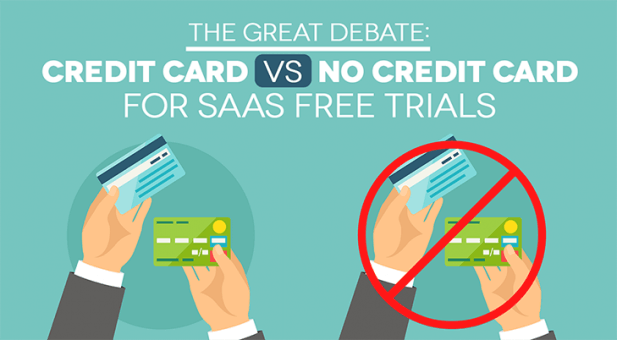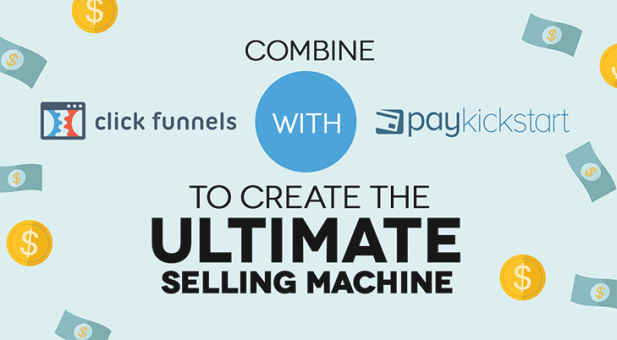Subscription growth hack (by PayKickstart)
Facebook Group - 3,932 members
Visit Group
The debate between SaaS free trials with a credit card and SaaS free trials without a credit card has many an entrepreneur scratching their heads. Which one will bring the best conversions? Which one should they pick? While there’s no straightforward answer, there are several factors that, when considered, can help give direction on which way to go.
Before jumping into that, you may be wondering, do I even need to offer a free trial? If you are in the SaaS business, the short answer is yes. Whether you package that as self-service SaaS free trials or a demo, which is a managed free trial, the bottom line is you need to offer a free trial.
Why?
Because today’s customers have so many options, any signup friction will instantly chase them away. If they come to your site wanting to try before buying and you do not have a way for them to do this, they will head over to the competition. So, you need to have a free trial option available.
(Note: A money back guarantee is a poor substitute for a free trial. No one wants to pay for something they have not tried, even if you promise to return their money if they are not satisfied.)
With that said, let’s now turn back to the credit card debate. First, we’ll look at SaaS free trials with a credit card.

SaaS free trial with credit card is where you require a user to give you their credit card information before unlocking the free trial.
Lead Qualification: If a customer is willing to give you their credit card details to try your product, this tells you they are very interested in what you have to offer. That is, they are a self-qualified lead.
Easier Conversions: If a customer has already put in their payment details, you do not need to sell to them further – if they like your product, they will keep using it, even after the free trial ends.
Less Bad Leads: Nothing sucks the life out of your sales team like talking to people who are there to “look around” or “kick the tires.” Asking for credit card details upfront dissuades such people from signing up.
Fewer Overall Leads: Some customers may not want to pass on their credit card details, even if they are interested in your service – especially if they are currently weighing several options.
Refunds: Customers who forget to cancel their account after a free trial may get charged, leading to emails requesting for refunds.
This option works best in the following scenarios:
If you choose to go with this option, here are some tips you can follow:

In this option, you offer customers a free trial but do not require any credit card details.
Less Friction: If you do not ask for credit card details, signup friction goes down. With this option, anyone even remotely interested in your product can sign up for a free trial.
More Leads: With no credit card required, your sales team will have more leads to work with, something that can potentially help them close more sales. Also, having more leads can also offer opportunities to upsell, down-sell or cross-sell other products.
Greater Trust: If your customers see you are willing to give them full access to your product without asking for anything in return, they may trust you all the more for it, which is good when trying to get them to buy from you at the end of the free trial.
Unqualified Leads: If you are giving something away for free, it becomes difficult to qualify any leads who sign up. Who are the tire-kickers, and who are the serious customers? As such, your sales team will have to work double hard to qualify leads.
Elongated Sales Process: Even though people have signed up for your service, you cannot count them as customers just yet. Unlike those who have given their credit card details who must opt-out of your service, those who haven’t must opt-in, a much harder action.
Encourages Freeloaders: People who have used your service for free may be unwilling to pay for it. They may instead opt to shut down the free trial and open another one with a different user ID.
This option works best in the following scenarios:
If you choose to go with this option, here are some tips you can follow:
The option you pick depends on what your current priorities are. If you are starting, you need to focus on paying customers, so requiring a credit card is the best option. If you are a startup with funding, the second option works better, because you’ll get more signups faster, and you probably have the resources to engage and qualify these leads.
Whichever option you choose, PayKickstart has the tools and features to help you accept credit card payments on your website. With our tools, you can choose to set up a free trial with or without a credit card requirement. To find out more about the PayKickstart platform and how it can benefit you, sign up for a free trial today.
Matt Callen is co-founder of PayKickstart. He has founded several million dollar online businesses and lives in Indianapolis. Since 2006, he has helped hundreds of thousands of entrepreneurs scale and grow their online businesses with software and automation.
Read More About Matt Callen